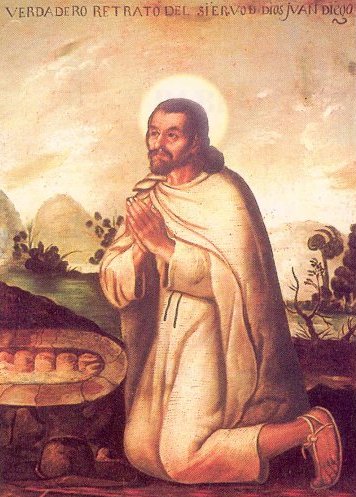Tilmàtli on:
[Wikipedia]
[Google]
[Amazon]



 A ''tilmàtli'' (or ''tilma''; , ) was a type of outer garment worn by men as a
A ''tilmàtli'' (or ''tilma''; , ) was a type of outer garment worn by men as a




 A ''tilmàtli'' (or ''tilma''; , ) was a type of outer garment worn by men as a
A ''tilmàtli'' (or ''tilma''; , ) was a type of outer garment worn by men as a cloak
A cloak is a type of loose garment worn over clothing, mostly but not always as outerwear for outdoor wear, which serves the same purpose as an overcoat and protects the wearer from the weather. It may form part of a uniform. People in many d ...
/cape
A cape is a clothing accessory or a sleeveless outer garment of any length that hangs loosely and connects either at the neck or shoulders. They usually cover the back, shoulders, and arms. They come in a variety of styles and have been used th ...
, documented from the late Postclassic and early Colonial era Colonial period (a period in a country's history where it was subject to management by a colonial power) may refer to:
Continents
*European colonization of the Americas
* Colonisation of Africa
* Western imperialism in Asia
Countries
* Col ...
s among the Aztec
The Aztecs ( ) were a Mesoamerican civilization that flourished in central Mexico in the Post-Classic stage, post-classic period from 1300 to 1521. The Aztec people included different Indigenous peoples of Mexico, ethnic groups of central ...
and other peoples of central Mexico
Mexico, officially the United Mexican States, is a country in North America. It is the northernmost country in Latin America, and borders the United States to the north, and Guatemala and Belize to the southeast; while having maritime boundar ...
.
Styling
The garment was to be worn at the front like a longapron
An apron is a garment worn over other clothing to cover the front of the body to protect from liquids. They have several purposes, most commonly as a functional accessory that protects clothes and skin from stains and marks. However, other typ ...
, or alternatively draped across the shoulders as a cloak. It was also frequently used as a carry-all.
Significance
Several different types of the garment were in use, designed for the various classes in society. Upper classes wore a tilmàtli ofcotton
Cotton (), first recorded in ancient India, is a soft, fluffy staple fiber that grows in a boll, or protective case, around the seeds of the cotton plants of the genus '' Gossypium'' in the mallow family Malvaceae. The fiber is almost pure ...
cloth
Textile is an umbrella term that includes various fiber-based materials, including fibers, yarns, filaments, threads, and different types of fabric. At first, the word "textiles" only referred to woven fabrics. However, weaving is n ...
knotted over the right shoulder, while the middle class used a tilmàtli made of ayate fibre
Fiber (spelled fibre in British English; from ) is a natural or artificial substance that is significantly longer than it is wide. Fibers are often used in the manufacture of other materials. The strongest engineering materials often incorp ...
, a coarse fabric derived from the threads of the maguey agave
''Agave'' (; ; ) is a genus of monocots native to the arid regions of the Americas. The genus is primarily known for its succulent and xerophytic species that typically form large Rosette (botany), rosettes of strong, fleshy leaves.
Many plan ...
. It was knotted over the left shoulder. The lower classes knotted the garment behind the neck
The neck is the part of the body in many vertebrates that connects the head to the torso. It supports the weight of the head and protects the nerves that transmit sensory and motor information between the brain and the rest of the body. Addition ...
, where it could serve for carrying.
Miraculous image
A very famous tilmàtli was that worn byJuan Diego
Juan Diego Cuauhtlatoatzin (1474–1548), also known simply as Juan Diego (), was a Nahua peasant and Marian visionary. He is said to have been granted apparitions of Our Lady of Guadalupe on four occasions in December 1531: three at the hill o ...
in 1531; according to tradition, an image of the Virgin Mary
Mary was a first-century Jewish woman of Nazareth, the wife of Saint Joseph, Joseph and the mother of Jesus. She is an important figure of Christianity, venerated under titles of Mary, mother of Jesus, various titles such as Perpetual virginity ...
appeared on it in the presence of the bishop
A bishop is an ordained member of the clergy who is entrusted with a position of Episcopal polity, authority and oversight in a religious institution. In Christianity, bishops are normally responsible for the governance and administration of di ...
of Mexico City
Mexico City is the capital city, capital and List of cities in Mexico, largest city of Mexico, as well as the List of North American cities by population, most populous city in North America. It is one of the most important cultural and finan ...
.See Johnston (1981). The image is preserved in the Basilica of Our Lady of Guadalupe
The Basilica of Santa María de Guadalupe, officially called Insigne y Nacional Basílica de Santa María de Guadalupe (in English: Basilica of Our Lady of Guadalupe) is a basilica of the Catholic Church, dedicated to the Virgin Mary in her invoc ...
which attracts millions of pilgrims annually.
Notes
References
* {{DEFAULTSORT:Tilmatli Aztec clothing Our Lady of Guadalupe Men's clothing